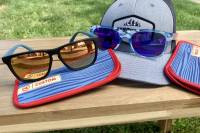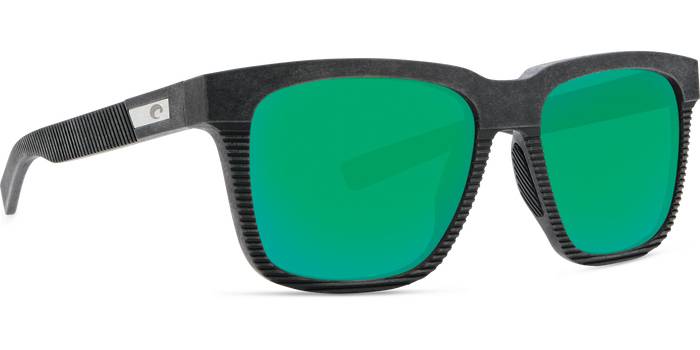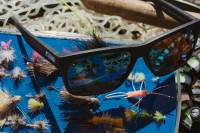The Best Sunglasses of 2022
Go beyond style with sunglasses that combine classic good looks with next-level technology and design.
As an avid group of outdoors folks, GearJunkie has had the chance to put many sunglasses to the test in harsh conditions. And over the years, the cream has really risen to the top, producing this list of the best sunglasses for outdoor pursuits.
I’ve been kind of crazy for sunglasses ever since I had corrective LASIK eye surgery in 2016. After a lifetime of corrective lenses, LASIK opened up a new reality in which Denver’s 300 yearly sunny days became a remarkable opportunity to wear shades regularly.
Below you’ll find a selection of the best sunglasses you can buy. We also break out some good budget sunglasses as well as pursuit-specific eyewear for fishing, boating, running, mountaineering, and more. We also feature a few models that meld fashion and function.
If you don’t have time to shop and just need the best sunglasses for general outdoor use, we recommend the Costa del Mar Fantail Pro. For women, we recommend the Smith Optics Wander — or Tifosi Swank if you’re looking for a more budget-friendly option.
Read on to simplify your search for sunglasses or jump to the end of the article for a guide on choosing the best sunglasses for your needs.
- Best Overall Sunglasses for Men
- Runner-Up
- Best Overall Sunglasses for Women
- Best Budget Sunglasses
- Best Mid-Price Sunglasses
- Best Adaptable Sunglasses
- Best Sunglasses for Hiking/Backpacking
The Best Sunglasses of 2022
Best Overall Sunglasses for Men: Costa del Mar Fantail Pro
All in all, Costa del Mar is one of the best sunglasses brands on the market, particularly for outdoor use. While the brand focuses on water sports and fishing, the durability and lens quality is second to none.
One of its pinnacle products, the Fantail Pro ($277), packs in performance like no other pair of sunglasses we’ve tested this year. It takes the top slot of our best sunglasses of 2022.
In testing, we adored the crystal clear vision afforded by the Premium Polarized 580 Lenses on our test model sporting Green Polarized Mirror Glass. On bright days, the slightly amber lens provides a perfect blend of contrast and brightness reduction, with 10% light transmission.
The lenses are certainly the star of the show with Costa. But the frames also pack a punch. The Fantail Pro has an excellent customizable nosepiece that makes these glasses both secure and comfortable. Rubberized arm ends add a comfortable grip to these high-performance sunglasses.
Whether you’re relaxing on a boat or trudging up a peak., the performance and customization make these some of the best sunglasses for any outdoor pursuit.
Pros:
- Top-quality, scratch-resistant glass lenses
- Excellent polarization
- Customizable nosepiece
- 10% light transmission
Cons:
- Expensive
- A little heavy for running due to glass lenses
Check Price at AmazonCheck Price at Costa
Runner-Up Best Sunglasses: Maui Jim Stone Shack
If Costa del Mar is the king of the fishing world, Maui Jim reigns supreme among sailors and recreational boaters. During a decade living in the Caribbean, I made friends with many boat captains. Their choice of sunglasses for long days under the harsh sun was Maui Jim.
The Maui Jim Stone Shack ($346) is a close runner-up to the sunglasses above. These have Maui Jim’s excellent SuperThin Glass lenses, which proved in testing on both bright snow and sand dunes to be clear, durable, and easy on the eyes.
Much like the Costa del Mar, the Stone Shack also thrives on the water with world-class polarization.
It lacks the adjustable nosepiece and comes in at an even higher price, so the Fantail Pro stands a slot above. But if you love the acetate frame style in a high-end pair of sunglasses, these are hard to beat.
Pros:
- Clear, sharp SuperThin Glass lenses
- Top tier polarization
- Durable glass construction
- Stylish
Cons:
- Expensive
- No adjustable nosepiece
- The optional clear acetate frame model looks great, but the frame can let in some bright light on the edges
Check Price at AmazonCheck Price at Maui Jim
Best Overall Sunglasses for Women: Smith Optics Wander

Smith’s Wander sunglasses ($189) are a little pricey, but after testing them for a few weeks, they quickly found their way onto this list as an everyday option.
They have quality construction, fit well, provide polarized protection against UV rays, and don’t slip or slide around the face. We’ve worn these glasses casually from day to day, but also tested them while hiking and running. They fit into a unique category, as they’re stylish enough to wear from a run to the brewery.
The Smith Wander’s have Smith’s Chromapop lenses that enhance color and boost contrast — there are actually five different polarized options to choose from (VLT from 10-18% based on your preference).
These sunglasses have a lightweight bio-based frame and stainless steel temples. The bridge width is 18mm, putting these shades in the category of a medium fit.
Finally, the clarity of the Wander lenses is fantastic. No matter how bright the sun gets where our travels take us, these shades haven’t let us down yet.
Pros:
- Polarized
- Comfortable for everyday wear and activities like running
- Great style
Cons:
- Don’t come with a hard carrying case
Check Price at AmazonCheck Price at Smith Optics
Best Budget Sunglasses: Knockaround

OK, we aren’t even going to call out a “best” of this brand, because there are numerous styles with a grip of customization options. From our testing, we thought all of the styles worked very well for a fair price. When it comes to decent sunglasses at a great price, Knockarounds are hard to beat.
No, they won’t stack up with a pair of Costas or Maui Jims. But let’s face it — those brands don’t come cheap. And if you can’t afford them, or just happen to be someone who loses or abuses sunglasses, a more affordable pair makes a lot of sense.
At $35, these are about as cheap as quality sunglasses come these days. Don’t know where to start? Read our full review here, and then head on over to the Custom Design Shop and go wild.
Pros:
- Affordable
- Fun colors and styles
- Protect eyes from UVA and UVB rays
Cons:
- Lower build quality
- Lenses are not nearly as good as more expensive brands
Check Price at KnockaroundCheck Price at Amazon
Best Mid-Price Sunglasses: Tifosi Swank
Tifosi is a pretty great brand for quality, well-priced sunglasses. While definitely a big improvement from cheap gas station sunglasses, they still only hit your wallet for about $50. If you’re prone to losing sunglasses, it won’t sting too badly.
Overall, the Tifosi Swank ($50) is our favorite model from the brand. With a very classic design, they look great on most people’s faces. The polycarbonate lenses are clear and light and offer 100% UVA/UVB protection.
“They feel sturdier and I honestly trust they’re protecting my eyes better than other budget brands,” said our tester. The Tifosi Swank also comes in an XL model, which we’ve tested and liked as well.
If you’re looking for high-end lookalikes in a cost-efficient package, give these a try.
Pros:
- Good lenses for a budget brand
- Build quality is better than cheaper models
Cons:
- Optics still don’t approach those of high-end brands
Best Sunglasses With Adaptable Lenses: Julbo Fury
The Julbo Fury ($140-$220) is one spectacular pair of sunglasses for athletes. We’ve been testing a single pair for more than three years and still reach for them every day for our morning run or post-work ride.
These sunglasses are light, comfortable, protective, and have the best adaptable, light-adjusting lenses on the market. Julbo calls its tech “REACTIV” and it’s an appropriate name. In low light, they become nearly clear. This is awesome during winter morning runs before sunrise as they protect eyes from freezing winds.
And as the sun rises, they darken to block the rays. They’re also great for post-work bike rides as you can wear them into the night, maintaining protection but not blocking light.
Julbo designed these sunglasses for cycling. We wear them for pretty much any sport, from running or biking to backcountry skiing. If they were a bit more stylish for everyday use, they’d be our best sunglasses on this list, as they really are unbeatable. Read our full review here.
Pros:
- Very light
- REACTIV lenses work from near darkness to bright sun
- The protective shape keeps the wind at bay
Cons:
- Super athletic styling is not great for wear around town
- Expensive when coupled with REACTIV lenses
Best Sunglasses for Fishing: Bajío Vega
Bajío is relatively new to the fishing sunglasses market, but it is already crushing it. Among its options, the Vega ($199) stands out as an all-around performer. The brand’s most significant advantage over the competition? Clarity.
Unlike most other sunglass manufacturers, Bajío is focused on blue light. Cutting the blues by 95% results in less eye fatigue and a crazy crisp view. When I put on a pair for the first time, I just sat and stared at the mountains. It’s like they make the real world just a bit more HD.
The lens color options are tailored to fit your specific fishing environment. I don’t know much about fishing the salt flats, but the rose mirror lens makes fish pop out of mountain streams. They’ve become my go-to daily wearers for the clarity and my obvious choice for the river.
If you like to hike up to mountain streams and lakes to fish, these are hard to beat.
Pros:
- Insane clarity
- Customizable lens options
- Aggressive wrap style for increased coverage
- Lightweight
- Eco-friendly
Cons:
- Big. Might be too large for smaller faces
- No adjustable nose piece
Best Sunglasses for Hiking or Backpacking: Ombraz Armless Sunglasses
The brand Ombraz launched some of the most unique sunglasses on the market in 2018, and I’m glad to see they’re getting attention at retailers.
What makes them unique? They have no arms! Instead, a fabric strap holds the sunglasses over the ears. This means they have no arms to break, so you can stow them in a jacket pocket or pack without the worry of crushing them.
I put them to the test for several months and was consistently impressed with the utility and quality of these sunglasses. They also look great, which was surprising considering the innovation.
Pros:
- Stay secure on your face during activity
- Extremely durable. We’ve seen the brand founder put them in a soft case and stomp on them with no issue!
- No arms to break. See above.
- Great lenses
- Look good
Cons:
- Armless sunglasses require you to remove them over your head
- Can trap dirt while dangling off face
Check Price at HuckberryCheck Price at Ombraz
Best Sustainable Sunglasses: Costa del Mar Pescador
Last year, Costa built a line of sunglasses with frames made from recycled fishing nets. Aptly named the Untangled collection ($226), it’s a wonderful idea. It gives us one more way to support plastic recycling and helps remove one more drop from the ocean of plastic that pollutes our seas. And furthermore, they’re excellent sunglasses!
We struggled to decide where these should fit in our lineup. One tester thought they should be best overall. But in reading reviews, it’s clear that they don’t fit people with smaller faces well at all.
They are also a little heavy and don’t protect from glare on the side as much as the overall winner. But they do look great and are excellent everyday sunglasses if they fit your face well.
All sunglasses in the Costa del Mar lineup are superb, but if you want to lend a hand in reshaping the environment, you won’t sacrifice performance with the Pescador ($226).
Pros:
- Top-quality Costa del Mar glass lenses
- Crystal clear vision
- Made from recycled fishing nets
Cons:
- Heavy on the nose after many hours
- Won’t fit smaller faces
Check Price at AmazonCheck Price at Orvis
Best Sunglasses for Running: Nathan Adventure Polarized Sunglasses
Nathan’s Adventure Polarized Running Sunglasses ($50) were just released last year, and we already love them. These glasses have a lightweight TR90 frame, are durable yet light enough for hiking and trail running, and provide great coverage on the face. They’re also comfortable for hours on end.
These Nathan sunglasses are the first from the brand, offering 100% UV protection and nose and temple inserts with grippy TPE. We’ve thoroughly tested these and can testify to their no-slip powers while running.
Another reason to love these sunglasses? They come in four color options and are also prescription lens compatible.
Overall, while we love these sunglasses’ simple design and polarized protection, the real reason they made our list is the quality for the low price — just 50 bucks. Moving fast in sunglasses increases the odds of mishaps, and at the price, we’d consider them replaceable.
Pros:
- Clear and wide field of vision
- Great quality
- Affordable price
Cons:
- Squarer style may not be a favorite for everyone
Best Aviators: Roka Phantom Titanium
ROKA burst on the scene a couple of years ago with aviators for running. Since then, the brand has churned out some really cool styles that are function-forward.
The Phantom — the brand’s first aviators ($290) — remain one of our favorite sunglasses of all time. At 19 ounces, they are remarkably light. And with no-slip “Geko Pads” that cling to the face when wet, they’re ideal for running.
The titanium frames are both light and strong, but the standout feature of these sunglasses is the lens. They are clear, sharp, and durable, holding up to a year of testing with no scratching.
If you’re looking for the aviator style with functionality that goes far beyond sheer looks, these are a great choice. For more details, read our full review.
Pros:
- Very good lenses
- Extremely light
- Stylish if you like aviators
- Very durable
- Secure on face for running
Cons:
- Expensive
Check Price at AmazonCheck Price at Roka
Buyer’s Guide: How to Choose the Best Sunglasses
If you’re shopping for sunglasses, we’re here to help. Below, find our best advice for choosing sunglasses at any budget.
Why You Should Trust Us
GearJunkie editors have spent years learning about outdoor products, including sunglasses. We meet with brands to learn about the latest technology. Then, we research and test the best products on the market to ensure they perform in their intended environment.
Our goal is to help you find the best products for your outdoor pursuits. And we’ll do our best to find them within your budget, too.
The lead author of this article, Sean McCoy, has worked in the outdoor gear testing industry for nearly 15 years. He began his career serving customers as a rock climbing specialist at Midwest Mountaineering in Minneapolis. He then worked at newspapers to hone his reporting and research skills.
As the former Editor in Chief of GearJunkie, he tested hundreds of pairs of sunglasses over his 10 years at the helm of the brand. Today, he oversees editorial production across multiple websites. And he still loves testing gear.
Mary Murphy also contributed to this article. The Managing Editor at GearJunkie, Murphy puts optics to the test as an avid hiker, paddleboarder, and skier.

Frames
When choosing sunglasses, frame material helps dictate both appearance and weight. Among our favorite models, you’ll see recycled plastic from fishing nets and even titanium used for the frames.
Titanium makes an exceptionally light frame material we prize for its durability, but you’ll pay a premium price for it. Other metal frames include Monel, Flexon, and aluminum. Most of our test glasses for outdoor use do not use metal frames.
The majority of the frames we test are made from various types of plastic. Common plastics include zyl (zylonite or cellulose acetate), nylon, epoxy, and cellulose acetate propionate.
These are durable, light materials but have questionable sustainability. We look for brands that use recycled plastics when possible, such as the Costa Pescador above.
Lens Material
For optical clarity, there are no better lenses than mineral glass. They also provide excellent scratch resistance, so they’re a top choice when clear vision is a priority. However, glass lenses have some flaws. They are heavy, expensive, and more prone to shattering than plastic lenses.
Next down the scale for optical clarity are lenses made from a material called CR-39. It performs nearly as well as glass but weighs about half as much and is less prone to shattering.
Polycarbonate and Trivex are two other materials popular for their impact resistance. While both have less optical clarity than glass or CR-39, polycarbonate and Trivex lenses are much more impact-resistant than other types of plastic and thus popular with cyclists, shooters, and others who put a premium on physical eye protection.
Shape & Design
Beyond style (and let’s face it, style is important), the shape of sunglasses has a big impact on performance. Wider, larger sunglasses will offer more optical and physical eye protection.
Wraparound styles will protect eyes from the sides as well as directly in front. But larger sunglasses do not fit every face well. Those with smaller faces will want sunglasses that stay secure when moving the head up and down and side to side.
Similarly, those with larger heads and faces should favor larger shapes and designs. Smaller sunglasses will not protect the eyes well here, and too snug a fit can cause headaches for the wearer.
Polarized Lenses
Many sunglasses come with both polarized and nonpolarized lenses. For fishing, watersports, or other activities where glare reduction helps, polarized lenses are a much better choice. Some prefer nonpolarized lenses for driving, as they can cause strange aberrations with some windows.
Price
When it comes to sunglasses, we’ve found you really do get what you pay for. Less expensive sunglasses can perform well. But as you shell out $200 or more, expect greatly improved durability and optical quality.
Our top-rated sunglasses have proven themselves over years of testing. And they still look almost new today. But do note our budget choices are still good for many uses and will last if well cared for.
FAQ
What Are Polarized Sunglasses?
Polarized sunglasses have a specialized construction that reduces reflected light, or glare. Because they reduce, and in some cases nearly eliminate, reflected light, they are a top choice for fishing because they allow you to see into the water better than with nonpolarized sunglasses or the naked eye.
Polarized lenses also cut glare from car windows and reduce reflected light from the sky, resulting in blue skies looking darker through them. We generally recommend polarized lenses, although they can cause aberrations when looking through some car windows.
Are Expensive Sunglasses Worth It?
While we have a soft spot for cheap sunglasses, spending more on expensive sunglasses is worth it if you have the money. You will immediately notice the better lens quality, sturdier frame, and hinges of expensive sunglasses.
But where you’ll really notice the difference is in durability. High-end sunglasses will last much longer than cheap sunglasses as long as you care for them well.
How Should I Clean My Sunglasses?
Take care not to scratch your investment! Clean sunglasses by first running them under warm water to remove any potentially abrasive material like sand or dust.
You can use a little mild liquid dish soap to remove sunscreen or other oils too. Just put a dab on your clean fingers and gently work the soap across the wet lenses and rinse.
Once clean, shake off excess water and dry with a soft cotton cloth or, better yet, a microfiber cleaning cloth. The main point here is to not rush the job, and don’t scratch the lenses with a rough or dirty cloth.
Once clean and mostly dry, polish out any imperfections with a microfiber cloth. And there you go, crystal clear vision restored!
What Is the Best Style of Sunglasses?
Take a good hard look in the mirror. What do you like? Well, rock ’em! Sunglasses are a great place for self-expression. Have fun!
The post The Best Sunglasses of 2022 appeared first on GearJunkie.














